Stocks
Would we buy NIO as it lists in Singapore?
By Beansprout • 19 May 2022 • 0 min read
Chinese electric vehicle (EV) maker Nio has big plans to tap on rising demand for EVs. To do so, it will need to overcome rising costs in the near term.
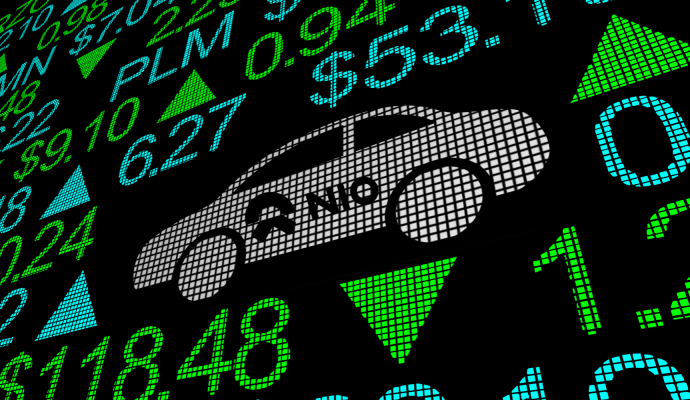
In this article
TL;DR
- Nio will be listed on the Singapore Exchange on 20 May. This will be a secondary listing for the Chinese electric vehicle (EV) maker whose primary listing is in the US.
- The EV sector is facing some challenges currently from rising raw material costs and supply chain constraints. Nio’s share price has also fallen by 75% in the past year as a result.
- In the long term, the EV sector remains promising as car sales could rise exponentially. Nio is currently loss making, but targets to breakeven by the fourth quarter of next year as it ramps up on production.
- Nio might be in for a bumpy ride over the next few quarters. This is especially so if Chinese regulations remain unclear and the tech selloff continues.
What happened?
Here’s the news – Chinese electric vehicle maker Nio will be listed on the Singapore Exchange on 20 May (Friday).
For investors who are looking for green energy companies to invest in Singapore, this is definitely something to put on your radar.
Who is NIO?
When it comes to EVs, the first name that comes to mind is definitely Tesla (It’s Elon Musk after all!)
But if you have been following the EV market closely, then Nio would probably be a familiar name as well.
NIO is a Chinese producer of premium EVs. Its claim to fame came through from being the first new EV company in China to achieve mass production and delivery.
We recently ran a poll with our Telegram community to find out what is the favourite EV stock.
Guess which stock stood out after Tesla?
Not Rivian. Not Xpeng. But Nio.
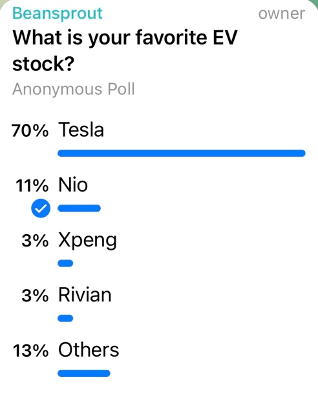
Why list in Singapore?
Nio’s primary listing is in the US where most of the trading activity takes place. It was also recently listed in Hong Kong.
You might be wondering why it is listing in so many different markets. After all, the listing fee is not cheap right?
The official word from the company is to expand its investor base, improve liquidity, and provide an alternative venue for trading.
But I think a more important reason is really to side-step US-China tensions.
Nio is one of the China-based companies that could be delisted from the US for not complying with rules requiring it to share its financial accounts with regulators.
So the Singapore listing might be a way for the stock to continue trading even if it were to be delisted from the US.
Who would be interested in trading NIO stocks in Singapore?
What is important to note is that the shares are fungible between US and Singapore.
What this means is that if you purchase Nio stock in the US, you can convert the stock into the Singapore listing and sell it here.
As a result, the pricing between the US listing and Singapore listing is unlikely to be too different from each other.
This is what we also see for Alibaba stock. If we look at the price performance of the HK and US listings, they have been quite similar.
There’s no debate that the US will be where the bulk of the trading of Nio will take place. Even the trading volume in Hong Kong is small compared to volumes in the US.
But the listing in Singapore would allow investors to react to events that may take place outside of US trading hours.
The Ukraine war for example. Or comments made by a Chinese official about EV regulations.
Why trade in Singapore rather than Hong Kong then? The Singapore listing will be in US$, while the Hong Kong listing is in HK$.
For those of us in Singapore, holding the Singapore listing might just reduce one additional risk in having HK$ exposure. After all, we have seen news recently about the Hong Kong central bank coming in to defend its currency peg.
One less risk, one less worry.
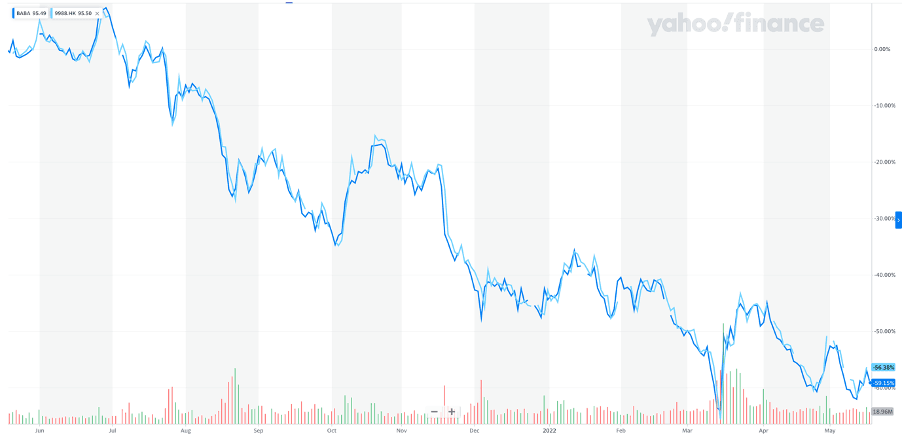
The EV market is facing some challenges currently
Nio’s share price has fallen from above US$60 last year to close to US$16 now.
That’s a whopping 75% decline.
Part of it is due to the selloff in Chinese tech. We’ve seen more regulations come in, and some broker had called Chinese stocks “uninvestable”.
But the EV sector has also faced challenges of its own.
In particular, EV makers face cost pressure from a triple whammy of supply chain constraints, rising raw material costs, and reduction in government subsidies.

1. Production has been impacted by supply chain constraints
I mean if Elon Musk says that Tesla may not reach its production targets due to supply chain constraints, then the challenge must be real.
Earlier it was a shortage of semiconductors. Now it’s a shortage of batteries.
It also isn’t that the companies are sitting around doing nothing.
Nio is working with its partner CATL to boost its supply of battery. It also expects to have the semiconductor chips it needs to meet its product targets for this year.
But even as it is able get its batteries and semiconductors, there’s another thing it needs to get over – rising costs.
2. Rising costs
We all know that the cost of almost everything is going up (except our salaries).
The price of EV battery cells is expected to go up for the first time in decades. This is because nickel and lithium, two of the key materials that go into batteries, are becoming more expensive.
Battery costs make up about 30% of the cost of producing an EV. This is especially worrying as falling battery costs have helped to drive EV adoption previously.
No wonder Tesla had to raise the price of its Model 3 in the US twice in the month of April.
I wonder how much room there is for the EV makers to keep raising their prices without seeing a slowdown in sales.

3. China is cutting subsidies
Incentives by the Chinese government have helped to drive higher EV sales previously.
After all, there was a need to achieve its target of EVs representing 20% of total auto sales by 2025.
However, the government is cutting subsidies on EVs by 30% in 2022. These subsidies might be removed completed by the end of this year.
There have been some recent reports that the government is looking to extend the subsidies to next year.
I think this will be great news if they are really extended. But I wouldn’t be holding my breath for it to happen.
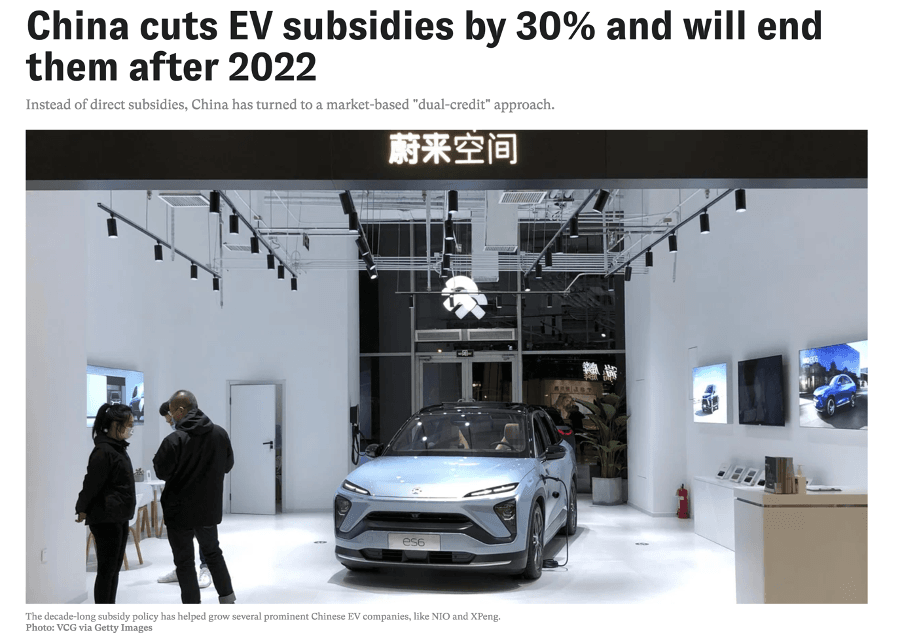
What if we look longer term?
In the long term, there’s still much to like about the EV sector.
It’s hard not to see how EVs will be how most of us would drive around in the future.
We’ve read about how Tesla EVs have seen “very strong demand” in Singapore, and how they have contributed to rising COE prices in Singapore.
1. Targeting a massive market
Global electric vehicle sales is expected to reach 14 million units in 2025. That’s a massive increase from just 3.1 million units in 2020.
Nio sold over 90,000 EVs in 2021, more than double what it sold in the previous year.
With the growing market, the opportunity is massive.
Nio entered the Norway market last year. It has announced plans to expand into Germany, Denmark, Sweden and the Netherlands this year.
By 2025, Nio expects to launch into 25 countries and regions worldwide.
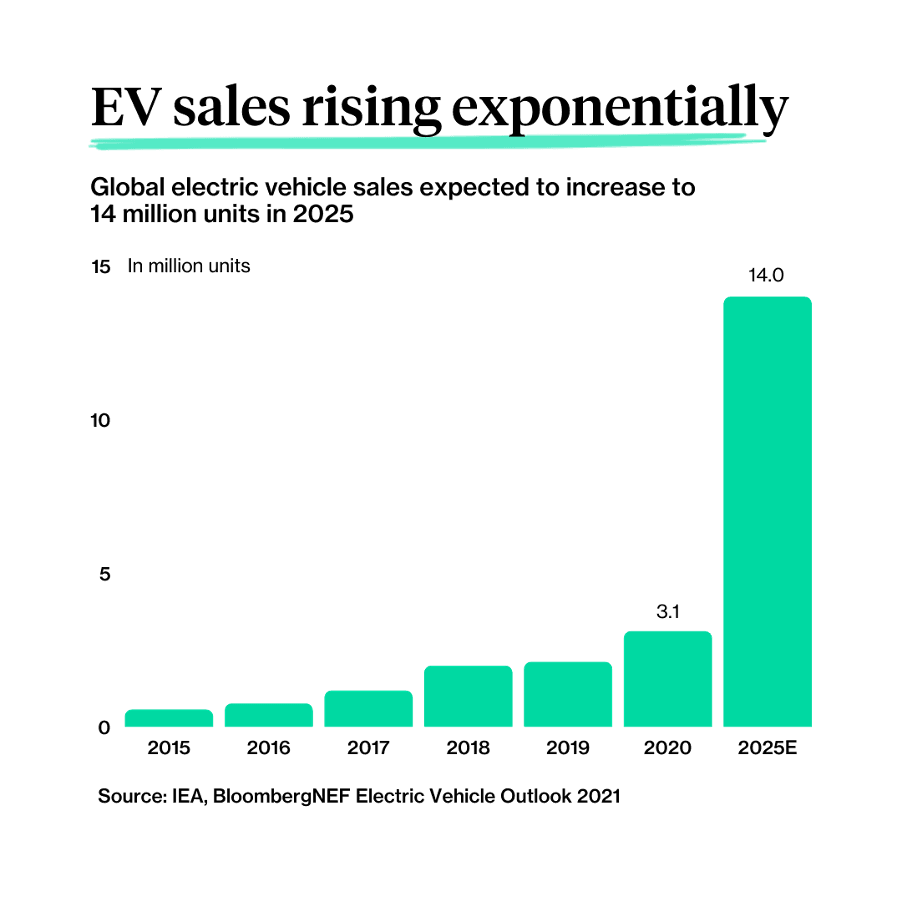
2. Nio targets to be breakeven soon
Despite rising costs, Nio still expects to generate a vehicle gross margin of 18% to 20% in 2022. This isn’t too far off from its margin of 20.1% in 2021.
The gross margin is calculated as the gross profit as a percentage of sales, and is a measure of the profitability of the company.
More importantly, Nio expects to be breakeven in the fourth quarter of 2023. This will pave the way for it to generate its first full year of profit in 2024.
For investors who are increasingly looking at the path to profitability of tech companies, this is definitely good news.
3. Nio is innovating
Here’s something interesting: Nio differentiates itself through its technology, including battery swapping and automotive driving.
Car owners can simply drive into a booth where the battery is removed and replaced with a fully charged power pack.
This is an automated process and happens within minutes.
Nio currently has 777 power swap stations in China to support the battery swap process, and the adoption of this service could increase as more stations are rolled out.
Nio is also working on its autonomous driving technology to cover use cases such as expressways and parking.
Would we invest in Nio?
It seems like the next few quarters will be pretty tough for Nio.
It will have to find a way to pass on all the rising costs from raw material shortages, supply chain constraints and reduced subsidies to customers.
Nio is trading on a trailing price to sales valuation of 4.3x. Not high compared to Tesla’s price to sales of 14x. But there’s nothing that could stop it from going to 2.0x or 3.0x.
On a more macro level, it also remains uncertain when the Chinese clampdown on tech would end.
Yes, the government has come in to say that they would provide some support, but words are just words until we see real action coming through.
In the meantime, the global tech sector continues to be ravaged by the higher interest rates.
Hence, Nio might not tick all the boxes for what we would add to our portfolio right now, especially with a potential recession coming through.
But if you are a firm believer in the long term growth of EVs and can ride out the current volatility, then it might be a good time to start taking a look at it.
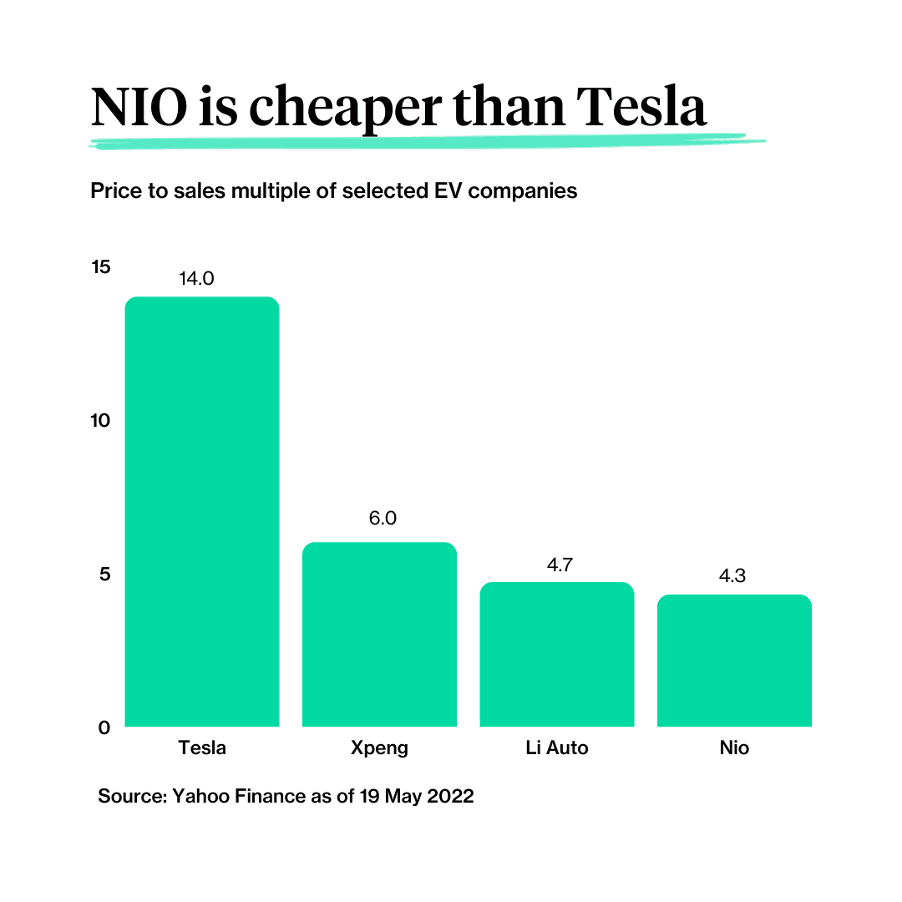
This article was first published on 19 May 2022 .
Read also
Gain financial insights in minutes
Subscribe to our free weekly newsletter for more insights to grow your wealth
0 comments